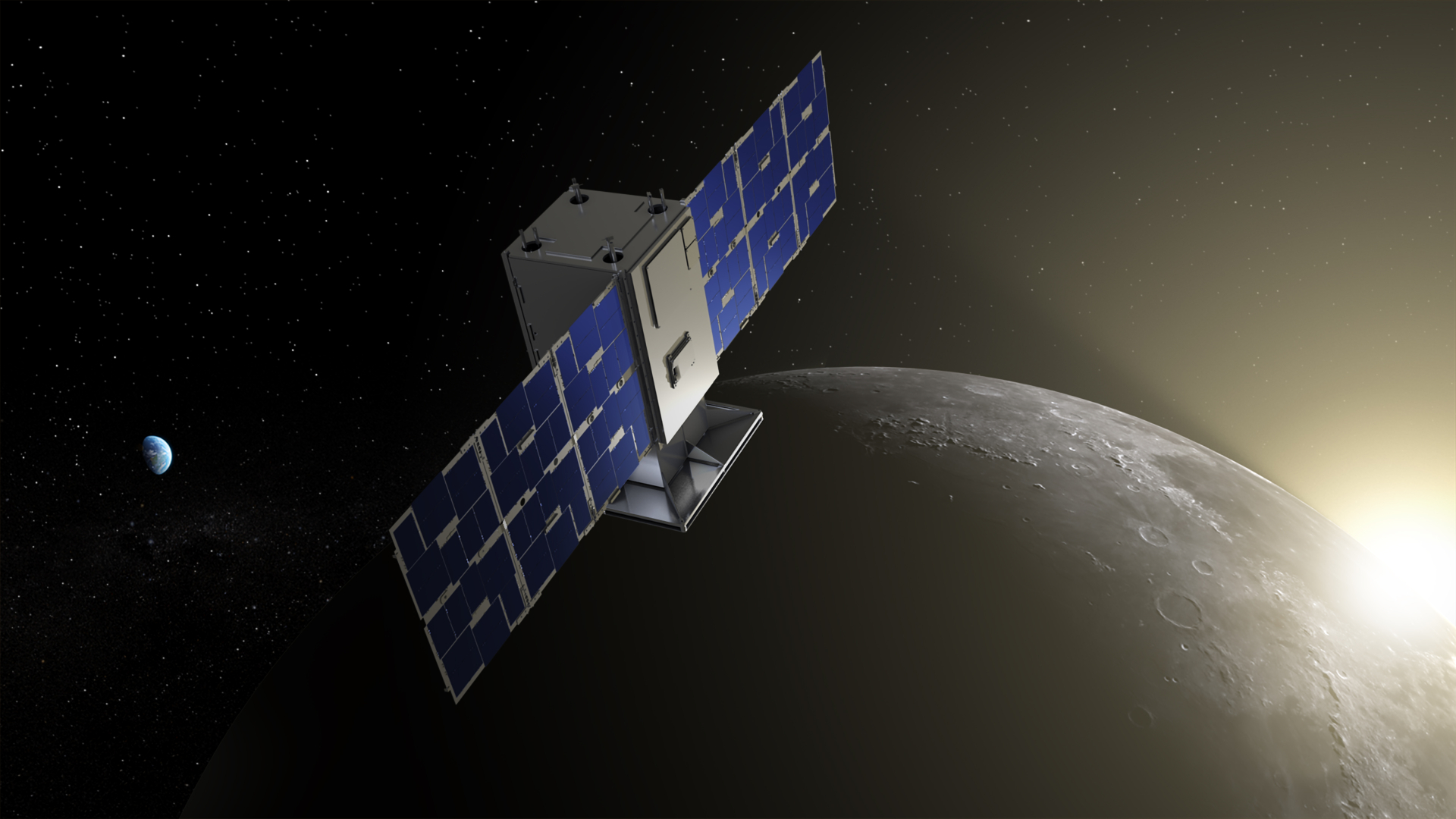NASA's tiny CAPSTONE mission continuing to moon as team works communications glitch
Ground controllers lost contact with the spacecraft shortly after solar array deployment.

Operators lost contact with the moon-bound CAPSTONE satellite yesterday (July 5) after completing a set of initial tasks following its separation from the rocket upper stage.
CAPSTONE (short for "Cislunar Autonomous Positioning System Technology Operations and Navigation Experiment") launched from New Zealand atop Rocket Lab's Electron rocket on June 28. On Monday (July 4), the mission announced the rocket's Photon satellite bus successfully released the CAPSTONE spacecraft after sending it off on a trajectory toward the moon. Only 11 hours later, bad news arrived as the spacecraft, which is meant to test out an experimental orbit that NASA wants to use for its future Gateway lunar space station, inexplicably went silent.
In a statement issued on Tuesday evening, Advanced Space, a Colorado-based aerospace company that operates the CAPSTONE mission for NASA, said the microwave-sized satellite successfully deployed its solar arrays after separating from Photon and started charging its batteries. Spacecraft controllers, Advanced Space said, pointed the satellite's antennas toward Earth and established contact via a deep-space ground station in Madrid and later via NASA's Goldstone ground station in California.
Related: Every mission to the moon
"The operations team began check-out and commissioning of the spacecraft," Advanced Space said in the statement. "The operations team was able to determine spacecraft state (position and velocity) and design initial trajectory correction maneuver."
The controllers also switched on CAPSTONE's propulsion system and prepared it for a burn that should adjust the trajectory of the satellite so that it could enter orbit around the moon in November this year, the company added.
This maneuver, the first in a planned series of orbit corrections, however, couldn't be completed because of the "communication anomaly."
Get the Space.com Newsletter
Breaking space news, the latest updates on rocket launches, skywatching events and more!
In an earlier emailed statement, NASA spokesperson Sarah Frazier told Space.com that "the mission has enough fuel to delay the initial post-separation trajectory correction maneuver for several days," if needed.
According to Advanced Space, the CAPSTONE satellite is currently about 177,000 miles (285,000 kilometers) from Earth, following its planned ballistic transfer orbit, which provides margins "to resolve and understand this anomaly before proceeding with the first trajectory correction maneuver," the company added.
Follow Tereza Pultarova on Twitter @TerezaPultarova. Follow us on Twitter @Spacedotcom and on Facebook.
Join our Space Forums to keep talking space on the latest missions, night sky and more! And if you have a news tip, correction or comment, let us know at: community@space.com.

Tereza is a London-based science and technology journalist, aspiring fiction writer and amateur gymnast. Originally from Prague, the Czech Republic, she spent the first seven years of her career working as a reporter, script-writer and presenter for various TV programmes of the Czech Public Service Television. She later took a career break to pursue further education and added a Master's in Science from the International Space University, France, to her Bachelor's in Journalism and Master's in Cultural Anthropology from Prague's Charles University. She worked as a reporter at the Engineering and Technology magazine, freelanced for a range of publications including Live Science, Space.com, Professional Engineering, Via Satellite and Space News and served as a maternity cover science editor at the European Space Agency.









